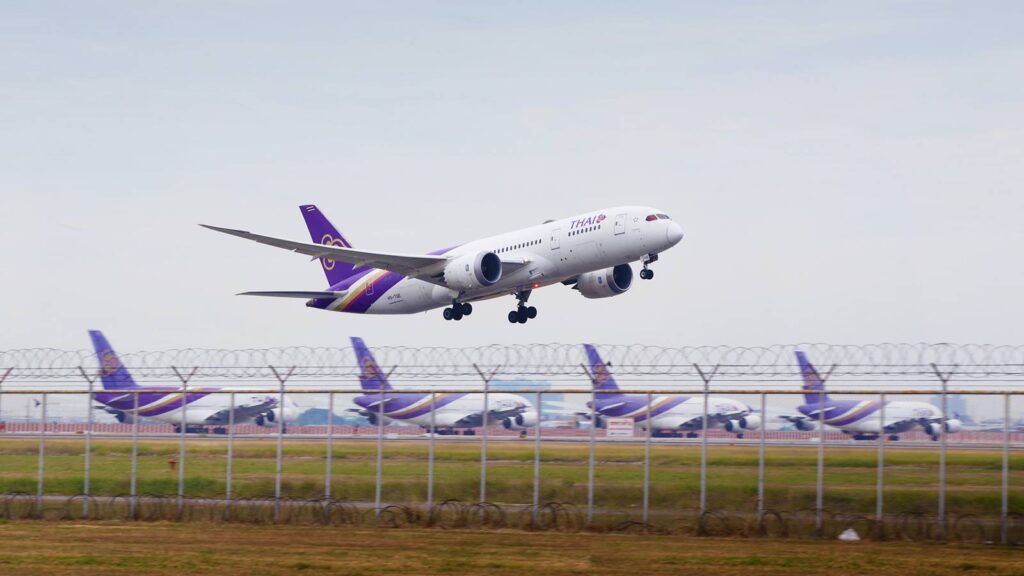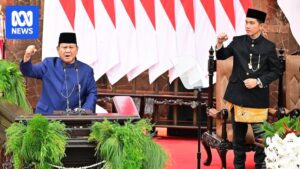
Thailand’s flagship carrier, Thai Airways, is urgently seeking approval from its Board of Directors to lease up to 10 new widebody aircraft. This move aims to compensate for the capacity lost due to the retirement of several older jets. The airline’s CEO has emphasized the critical nature of this expansion, describing it as “absolutely necessary” to maintain Thai Airways’ competitive position and connectivity within the region.
The proposal for fleet expansion is scheduled for submission on October 23. Reports from The Nation Thailand suggest that the airline intends to lease between eight and 10 wide-body aircraft to replace the capacity lost from retiring nine jets. These aircraft are expected to be on short-term leases of approximately six years, with service commencement anticipated around mid-2026.
Challenges and Strategic Necessity
Thai Airways’ decision to lease additional aircraft, despite having numerous new aircraft on order, stems from delivery delays, particularly affecting the Boeing 787 models. The airline is also grappling with capacity reduction due to the grounding of part of its fleet, attributed to shortages of parts for the Rolls-Royce Trent 1000 engines.
This development follows three previous rejections by the board for similar fleet expansion proposals. Notably, the airline had earlier attempted to negotiate deals for Boeing 777-300ER and Dreamliner aircraft, which ultimately fell through. A proposal to lease Airbus A330-200 aircraft was also declined, as it conflicted with the airline’s fleet simplification strategy outlined in its five-year business rehabilitation plan.
CEO’s Perspective
Thai Airways’ CEO, Chai Eamsiri, highlighted the urgency of the current proposal, stating,
“The original deals that were negotiated but not concluded were closed by other airlines. Therefore Thai Airways must now urgently procure new leased aircraft to replace the retired ones.”
He confirmed that the focus remains on acquiring wide-body aircraft to support the airline’s long-haul routes.
Fleet Modernization and Future Plans
According to data from ch-aviation, Thai Airways currently operates seven aircraft variants across five families. The airline plans to streamline its fleet to five variants across four families in the coming years. This strategic shift includes phasing out older models like the Airbus A380s and Boeing 747s, which were retired during the pandemic, as well as the Boeing 777-200ERs and Airbus A330-300s, to be replaced by newer Boeing 787s.
On the narrowbody front, Thai Airways operates Airbus A320-200s and anticipates the arrival of its first Airbus A321neo aircraft soon. As of June, the airline had 79 aircraft and aims to expand its fleet to 150 by 2033, reflecting a significant growth trajectory.
Industry Context and Implications
The announcement comes as Thai Airways navigates a challenging post-pandemic recovery phase, marked by increased competition and evolving market dynamics. The airline’s strategic emphasis on modernizing its fleet aligns with broader industry trends where carriers are investing in fuel-efficient, technologically advanced aircraft to enhance operational efficiency and reduce environmental impact.
Experts suggest that the successful approval and implementation of this proposal could significantly bolster Thai Airways’ capacity to compete on long-haul routes, particularly in the lucrative Asia-Pacific region. The move also underscores the airline’s commitment to overcoming logistical hurdles and maintaining its status as a leading carrier in Southeast Asia.
Looking Ahead
The board’s response to the upcoming proposal will be pivotal in determining the airline’s immediate strategic direction. Approval could set a precedent for future fleet expansion initiatives and provide insights into the types of aircraft Thai Airways will prioritize in its leasing strategy.
As the aviation industry continues to recover from the impacts of the COVID-19 pandemic, Thai Airways’ efforts to modernize its fleet and enhance its operational capabilities will be closely watched by industry analysts and stakeholders alike.






